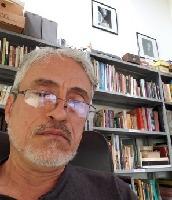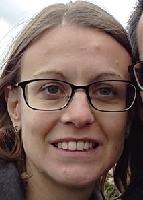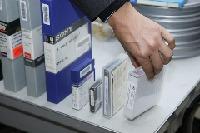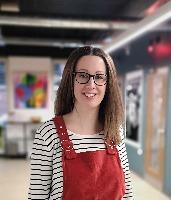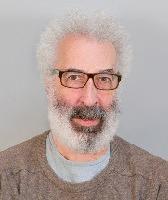Blog
Unless otherwise stated, content is shared under CC-BY-NC Licence
Por que preservar os registros de uma pandemia
Miguel Ángel Márdero Arellano, Coordenador da Rede Cariniana, Instituto Brasileiro de Informação em Ciência e Tecnologia – IBICT
The following blog is available in English below
O tratamento dos registros sobre a pandemia do COVID-19, por profissionais da informação, deverá incluir a aplicação de estratégias de preservação para garantir a confiabilidade das fontes e o conhecimento da realidade atual.
O volume de informação sobre a pandemia em formato digital cresce a cada minuto. Todos os esforços para organizar esses registros poderão ser reconhecidos no futuro por aqueles que enfrentarão novos problemas de saúde pública. Da mesma forma, as estratégias de preservação que forem aplicadas a esses registros proporcionarão a garantia de termos fontes de informação confiáveis para conhecer a realidade atual.
Isso será o resultado de um trabalho árduo de profissionais da informação empenhados em descrever todos os detalhes de registros dos eventos em diferentes formatos. Após um período de isolamento, a necessidade de abrir bibliotecas e arquivos para atendimento das comunidades, mesmo antes de estarmos em um ambiente livre da doença, é produto do compromisso social dos responsáveis pelos serviços de informação para que todos tenham acesso a informações precisas sobre as ações necessárias para conter os efeitos do vírus.
Building and Sustaining the ‘Digits for Good’ Community
Nancy McGovern is the Director of Digital Preservation at MIT.
This year’s theme - Digits: For Good – is great! It’s always fun to work on a WDPD blog post. There are so many examples of collaboration within and beyond the digital preservation community. Working together is part of what we do, yet it often seems to be more intentional and valued in 2020.
The 2020 WDPD topic got me thinking about preserving digital content in a way I haven’t in a while. I have worked as a digital archivist and then as a digital preservation manager. As a digital archivist in the ‘80s and ‘90s, I found appraisal to be a very engaging activity and yet by the time I felt I knew enough to make a decision about keeping the digital content or not, I found it hard to not take the content – I inevitably got fond of it as I came to understand it. Working on digital preservation is more agnostic about content for me – if digital content needs to be preserved, I’m in! The examples I’m sharing are not about preserving specific material, they are more about sustaining community and building capacity to be able to preserve whatever needs to be preserved “for good – or at least for as long as required” – love that part of the Blog theme for WDPD. Here are some of the recent activities that I’m highlighting.
Digital Preservation for Every Archive
Jonathan Tilbury is CTO and Founder of Preservica based in the UK
From corporate to academic, charity to government, archives around the world are working harder than ever making sure that the events of the past year are documented for generations to come. With lessons to be learnt from this global health pandemic, and the end not quite in sight, having easy, automated, and affordable digital preservation software accessible to every archive, especially those with limited resources, has never been so important. The more people using digital preservation, the greater the benefit for all, but with this comes an increase in the number of non-expert users.
Luckily, there are a number of initiatives that will bring all these threads together to create an ecosystem that re-uses community expertise to deliver best practice digital preservation in an automated manner.
The UK Government Social Media Archive – now bigger, more comprehensive and searchable
Claire Newing is a Web Archivist at The National Archives, UK.
I’m really excited to be writing about how The National Archives (UK) has improved our social media archive. Different types of social media content are listed as either ‘Endangered’ or ‘Critically Endangered’ on the DPC ‘Bit List’ of Digitally Endangered Species so it seems like an appropriate subject for World Digital Preservation Day 2020.
We originally launched our social media archive in 2014 following a project we worked on with our former technical supplier, Internet Memory Research (IMR), to develop a method of capturing YouTube and Twitter content. My colleague, Tom Storrar, wrote about the project in detail in this post on The National Archives Blog: https://blog.nationalarchives.gov.uk/archiving-social-media/.
The UK Government Web Archive: Continuing to Capture the UK Government’s Response to COVID-19
Tom Storrar is the Web Archiving Service Owner at The National Archives.
The COVID-19 pandemic has been an unprecedented challenge for The National Archives’ Web Archiving Team. In the six months since our last blog post, we have continued our efforts to build a definitive record of the government response to the first pandemic of the digital age. Our three-pronged approach, consisting of regular in-depth archiving of core websites, complimented by broad crawls across the government web estate, working closely with our suppliers, MirrorWeb, and daily captures of interactive content with the excellent Webrecorder/Conifer tools have now matured and become routine.
This has not been without its technical challenges. With each of these “prongs” we have had to change the way we work, and rapidly: not only to working remotely, but also to new technology and to the speed with which content has been updated or published. This has prompted us to create new approaches to archiving content and to accelerate innovations that we had already started to develop before the pandemic. For example, we need to ensure that every member of the team has available to them their own version of Webrecorder/Conifer in this remote scenario. So far we have achieved this using virtual machines, which is quite a change from just a year ago, when we were taking turns capturing content from a single machine in the office!
Getting the records
Helen Dafter is an Archivist (Digital Preservation) at The Postal Museum
Before any archive can start to preserve digital records it first needs to get them into the archive. This is something I have been working on at the Postal Museum this year. It has been an exercise in advocacy and trust building as much as technical skills.
To set the scene, the Postal Museum cares for the archive of Post Office Limited (POL) and Royal Mail. It is an independent charity which has created its own challenges for this work. This blog focusses particularly on my work with POL but I hope that the processes developed will be applicable to Royal Mail in due course.
In 2018 POL developed retention schedules across the business. The Postal Museum commented on these during the project, identifying materials which needed to be offered to the archive. These provided the starting point for my approaches to POL departments to discuss the transfer of records to the archive.
Digital Preservation at the United Nations
Aleksander Gelfand is the Information Management Officer at the United Nations Archives and Records Management Section, Department of Operational Support, United Nations Secretariat in New York.
Digital preservation and media obsolescence have been issues on the minds of archivists at the United Nations since at least the 1970s. Then, information found on punch cards had to be preserved knowing that the cards themselves were not a suitable medium for preserving machine-readable information. A temporary solution was to transfer the information to computer tape, though the process was expensive and time consuming. With the increasingly introduction of new information technologies, preservation seemed a constantly moving target.
The 1980s was a decade of automation at the UN as computers running word processing and database software became ubiquitous. The UN Archives began advocating for action at the very beginning of the lifecycle of electronic records, and as a result Archives staff took a more active role in managing records rather than being a passive recipient. This, however, was easier said than done – at least initially.
The first large wave of digital records came in the form of floppy disks, which were increasingly common in collections accessioned throughout the late 1980s and throughout the 1990s. Frequently inside folders with paper records, unless properly described, these pieces of soon-to-be obsolete media could easily get lost. Nevertheless, by early 2000s, the contents of many of these disks had been migrated to external hard drives and many finding aids included descriptions indicating the presence of this digital media.
OPF at All Things Open: What we can learn from open source communities
Becky McGuinness is the Community Manager for the Open Preservation Foundation
In October, the Open Preservation Foundation attended the ‘All Things Open’ conference. Two of the themes it focused on this year were community leadership and diversity and inclusion, which are central to much of our recent and ongoing work. In this post, I’ll share some key takeaways from the event in the context of Digits: For Good, including celebrating the growth of open source, ensuring tech access for the underrepresented, the importance (and pitfalls) of community leadership, and best practices for creating a diverse and inclusive community.
In one of the keynotes, Erica Brescia, COO of GitHub, spoke about how open source has become a key driver of innovation in technology. Open source software is used in every sector and the amount of software is expected to grow exponentially in the next 10 years. As well as its increasing popularity across sectors from medicine and healthcare to memory institutions such as libraries, archives, and museums, the use of open source is expanding geographically. Five years ago, the majority of contributions came from the western world, but today, the epicentre of open source development has moved to developing nations with a huge increase in participation from India, Africa, China and Latin America. To support this growth, there will need to be more contributors, maintainers and commerce to meet demand. More importantly, there is a need for inclusive communities that support wide participation and access to essential knowledge and resources for those who are often underrepresented.
Max Communications - AIP Query Builder & Tagging
Tim Schofield is a Senior Developer for Max Communications.
Max are working with Imperial College London Archives and Corporate Records Unit (ICL ACRU) digitally preserving their documentation. We use Archivematica for digital preservation in tandem with AtoM as an access system.
The project set out to improve Archivematica’s reporting ability by developing an in-house QueryBuilder utility. The QueryBuilder enables the user to create compound queries and interrogate Archivematica’s database. For instance, searches can be run returning all packages created within a particular date-range, or packages over a certain size, or created by a particular user.
What is data integrity?
Matthew Addis is Co-Founder and CTO of Arkivum based in the UK.
What do we mean when we talk about data integrity? What is data integrity and why is it an important part of digital preservation? Data integrity means different things to different people. If you ask the question to an IT professional, compliance officer, corporate archivist, research librarian, or curator of a special collection then you will typically get very different answers. What we mean by data integrity depends on what we mean by data, how and why that data exists, and most importantly who’s using it and for what purpose. There is no single answer. But in all cases, digital preservation has a role to play in achieving data integrity, and that makes life in the digital preservation world both challenging and interesting!













































































































































